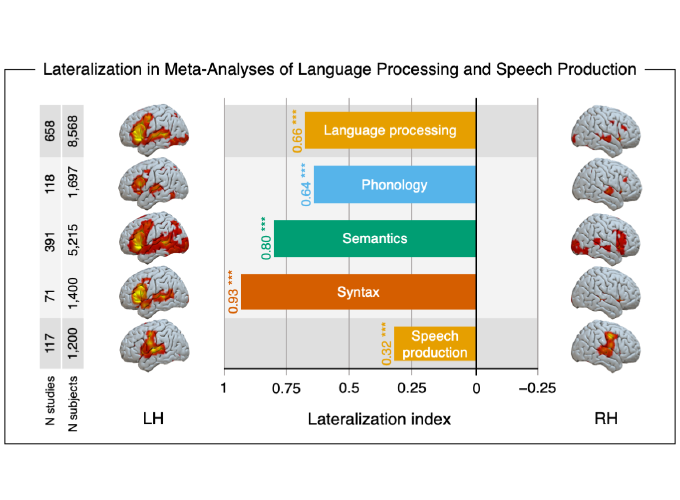Functional and structural brain asymmetries in language processing

Functional and structural brain asymmetries in language processing
Resumen
The lateralization of language to the left hemisphere of the human brain constitutes one of the classic examples of asymmetry in biology. At the same time, it is also commonly understood that damage to the left hemisphere does not lead to a complete loss of all linguistic abilities. These seemingly contradictory findings indicate that that neither our cognitive capacity for language nor its neural substrates are monolithic. This chapter reviews the functional and structural lateralization of the neural substrates of different aspects of language as revealed in the past decades by neuroimaging research. Most aspects of language processing indeed tend to be functionally lateralized to the left hemisphere in the adult human brain. Nevertheless, both hemispheres exhibit a certain equipotentiality with regard to some aspects of language processing, especially with regard to processing meaning and sound. In contrast, the so-called “core language network” in the left hemisphere constitutes a functional and structural asymmetry: This network (i) is crucial for a core aspect of language processing, namely syntax, which refers to the generation of hierarchically structured representations of utterances linking meaning and sound, (ii) matures in accordance with a genetically determined biological matrix, and (iii) its emergence may have constituted a prerequisite for the evolution of the human language capacity.